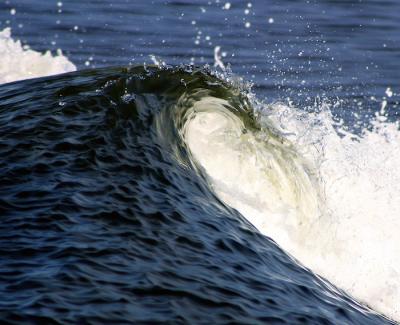Introduction to Ocean Literacy Principles (OLP)
Fig. 1. Wave produced by the wake of a ferry, Fanø, Denmark.
Image adpated from Wikipedia, courtesy of Malene Thyssen
The ocean regulates our weather and climate.
It supplies food, medicine, minerals, and energy resources.
Our environment, economy, and society all depend on the processes of the ocean.
Understanding the ocean is therefore essential to comprehending and protecting the planet on which we live.
Ocean Literacy Principles
Hundreds of ocean scientists, science educators (K–12 and informal) and learning researchers have developed a set of over-arching concepts that guide the K–12 teaching and learning of ocean sciences. An ocean literate person understands of the ocean’s influence on them—and their influence on the ocean. The seven Ocean Literacy Principles describe what we should all know and understand about the ocean and aquatic environments (Table 1).
Teaching Ocean Literacy
The wide range of scientific endeavors and concepts related to coastal and ocean science fits well into general science courses across scientific disciplines and grade levels. The Sea-Earth-Atmosphere Grade 3–5 curriculum is guided by the Ocean Literacy Principles, associated fundamental concepts, and scope and sequence.
An ocean literate person:
- understands the oceant literacy principles,
- can communicate about the ocean in a meaningful way, and
- is able to make informed and responsible decisions regarding the ocean and its resources.
- Learn more about the Ocean Literacy Principles and obtain updates, correlations to education standards, and links to related educational resources at marine-ed.org/ocean-literacy/overview.
- Alignment of Ocean Literacy Principles to the Next Generation Science Standards.
- iOS users: Download the ocean literacy app on iTunes here.










